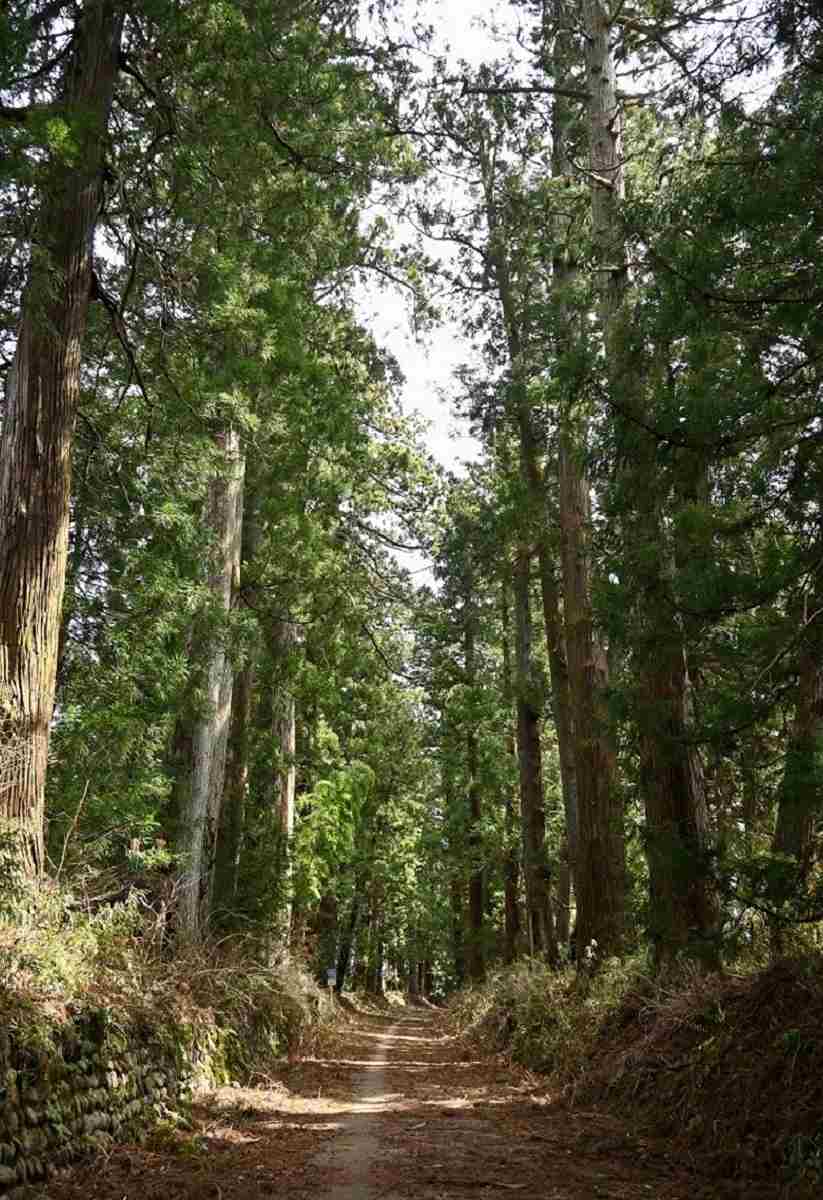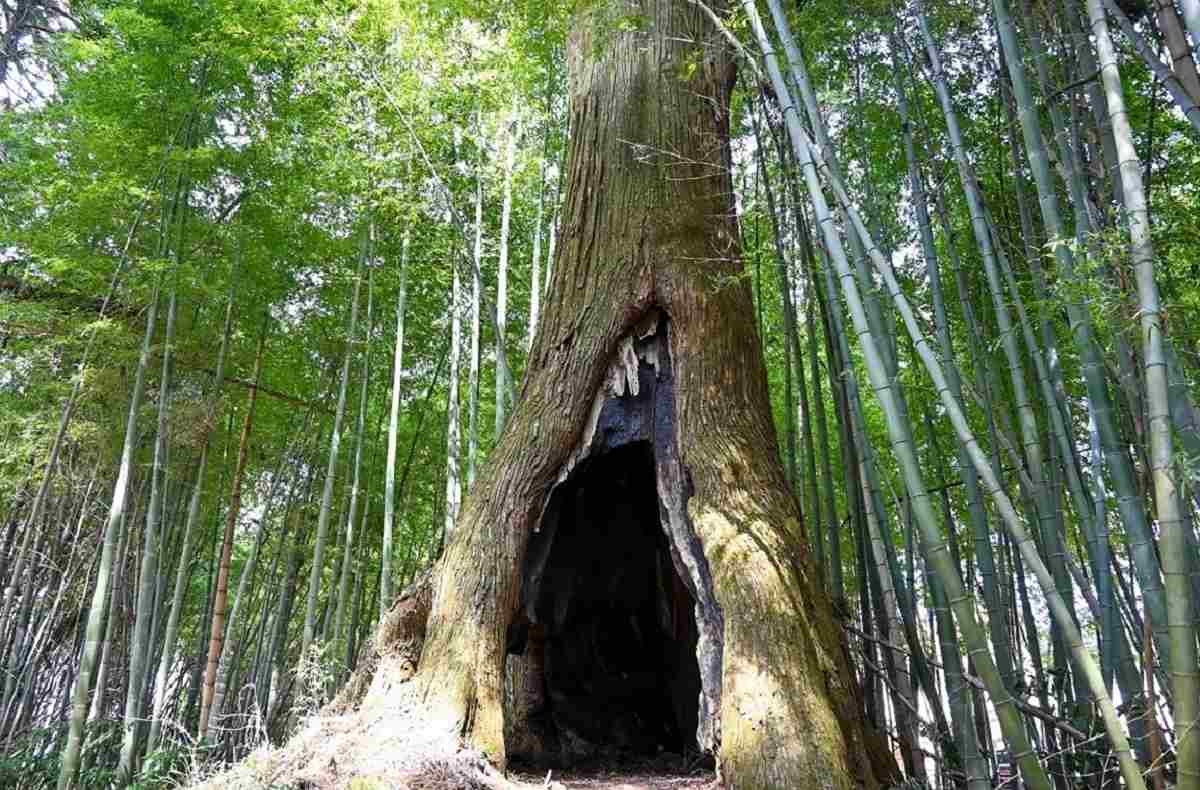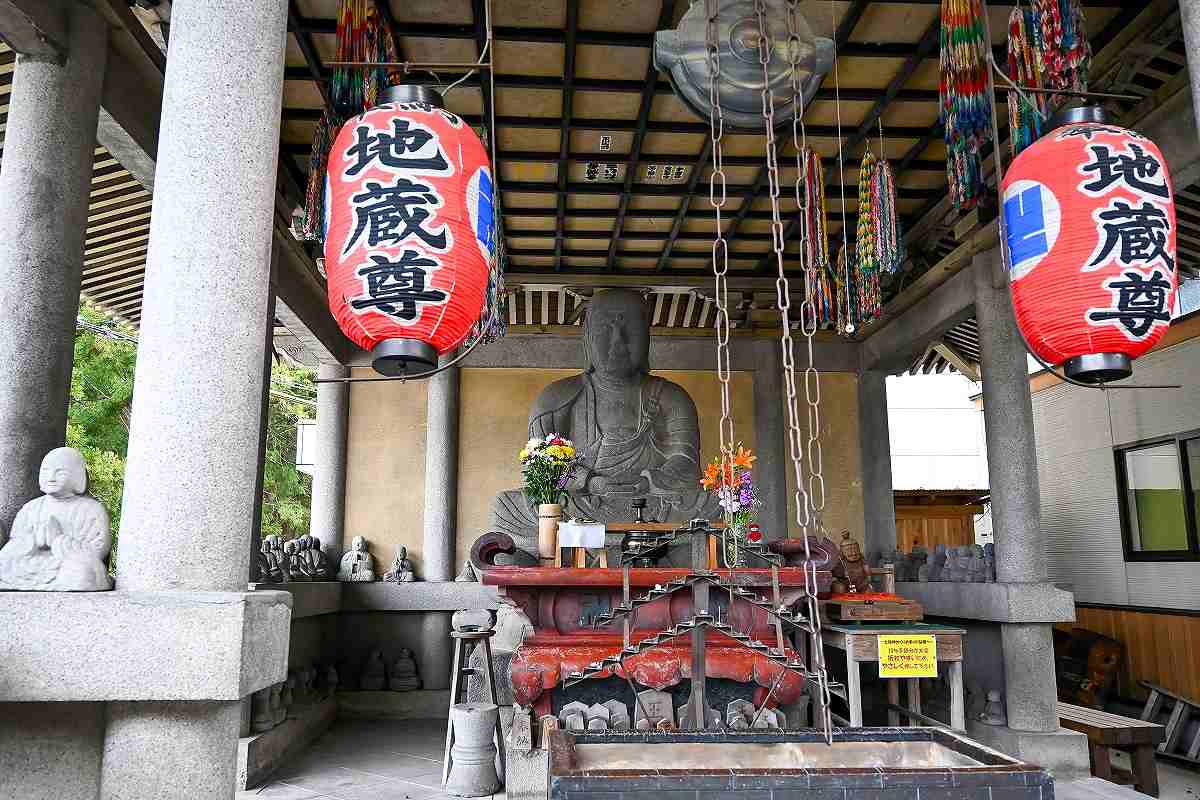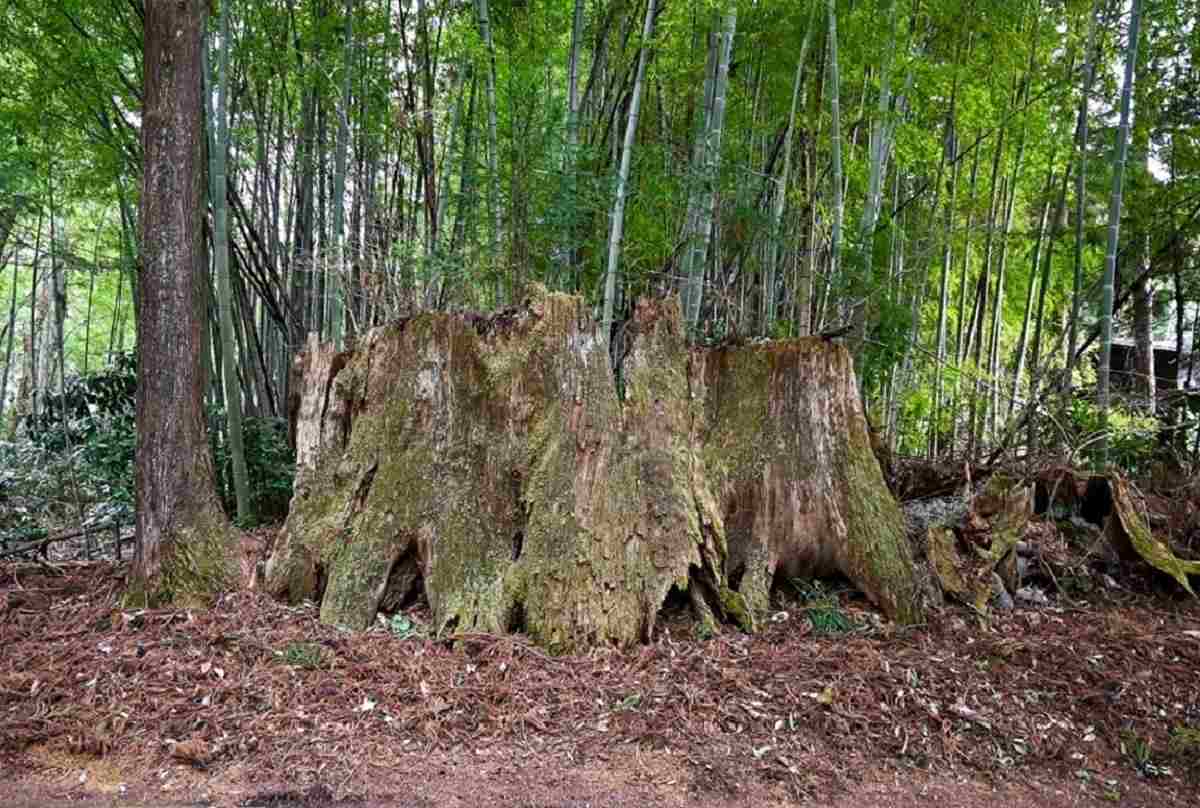
The area around Shichihonzakura is closed to vehicles to protect the cedars. The cedars towering over the stone wall seem even taller.

11:50 JST, May 29, 2024
Nikko Suginamiki Kaido (Nikko Cedar Avenue) is listed in the Guinness Book of World Records as the world’s longest tree-lined avenue.
The name sounds like a single street, but it is not. Cedar trees line 37 kilometers along three roads, Nikko Kaido, Reiheishi Kaido and Aizu Nishi Kaido. These three roads meet at Imaichijuku, just before Nikko.
The Nikko Kaido — one of the five major routes of the Edo period (1603-1867) — is home to many famous cedar trees that are living witnesses to the city’s history, where the Tokugawa shoguns used to parade when they visited the Nikko Shrine.
I walked around the area, aiming for 10,000 steps, to rediscover its charms and to immerse myself in the mood of a traveler in the Edo period.
The cedar trees in Nikko were planted over more than 20 years of work by Matsudaira Masatsuna, who served three shoguns, Tokugawa Ieyasu, Hidetada and Iemitsu, and donated them to Nikko Toshogu shrine.
The question is, why were cedar trees planted?
Hiroaki Fukuda of the Nikko Museum of History and Folklore, which has many exhibits on the cedar trees, said, “It is said that the cedar trees were appropriate for the approach to the Nikko Toshogu shrine because people felt the divine spirit in the appearance of the cedar trees growing into the sky.”
First, take a bus from Nikko Kaido, a six-minute walk from Imaichi Station on the JR Nikko Line or Shimo-Imaichi Station on the Tobu Nikko Line, to the Moritomo district, where the famous cedar trees are located.
In the district is the “sakurasugi cedar,” which literally means cherry blossom cedar, a tree in which wild cherry blossom seeds grow from a crack in the cedar.
There is also the so-called “Namiki Hotel,” located just beyond the milepost of Shichihonzakura. The huge tree is called Namiki Hotel because the base of the tree has rotted, creating a cavity that can accommodate about four adults. Namiki means a row of trees.
The inside of the cavity is slightly warm, perhaps because it is sheltered from the wind. It is impressive to see the shiny black bark on the inside, perhaps because of bonfires that were previously lit inside.

The huge tree is called Namiki Hotel. It has a huge cavity surrounded by flowers.
This section of Cedar Avenue is partially paved, but most cars drive on the parallel National Highway Route 119, so hikers on the avenue rarely see cars.
Also, traffic is not a problem in this section because the avenue is one level lower than the national highway. The refreshing scent of the cedar trees made me almost forget that I was in modern times.
Where the line of cedar trees ends, there is a junction with Reiheishi Kaido, and Oiwake Jizoson (stone guardian deity) is located at the point where the two routes diverge.
There is an anecdote that when shoguns visited Nikko Shrine, a fence was built around the stone statue to prevent it from being seen, as the three-meter-high statue was seen as distracting.

The seated stone statute of Oiwake Jizoson, which is said to have been made in the Muromachi period (1336-1573)
In Imaichijuku, which starts from this point, there are many miso shops and other long-established stores. In addition, there are tourist spots such as those related to Ninomiya Sontoku, who devoted his later years to the revival of Nikko.
The cedar trees re-emerge in front of Kami-Imaichi Station. The ground beneath the trees turns to dirt, and on both sides, waterways used to draw water into the inn area from the Daiya River make a cool sound.
Along the avenue, there are some places where only the bases of seven cedars remain in one piece, and a cedar whose trunk bears the scars of shells from the Boshin War, among other things.
There is also a continuous line of cedars that have no particular name, but have grown as tall and thick as a 10-story building.

The remaining trunks of the seven united cedars, called Shichihonsugi
The road extends about four kilometers from the sakurasugi cedar.
From here, you can take a bus to Tobu Nikko Station on the national highway.
If you return to the Imaichi area while strolling through Suginamiki Koen Park, you will walk about 7.3 kilometers, exceeding the 10,000 steps goal. In the park, there is an old-fashioned water mill that was once used to make incense sticks.
It is said that about 50,000 cedar trees were planted in the beginning, but due to typhoons and other factors, the number was reduced to about 12,000, some of which died while still standing.
To counter the decrease, there is a system of cedar tree ownership. Moreover, about 120 volunteers are registered to protect the trees.
Although I had driven past the avenue of cedar trees many times before, this time I learned a lot about it only after taking the time to walk along it. I also felt a desire to protect this beautiful avenue of cedar trees.
***
Japan Tourism is presented in collaboration with Ryoko Yomiuri Publication, which publishes Ryoko Yomiuri, a monthly travel magazine. click here.
"Features" POPULAR ARTICLE
-

Sanrio to Open Museum in Yamanashi Pref. Dedicated to Founder, Exhibits Include Hello Kitty, Other Characters
-

Autumn Foliage Surrounds Visitors to Tokyo’s Showa Kinen Park
-

My Daughter No Longer Speaks to Me, But I Want to See Her and My Grandchild
-

Kumamoto: Public Bath Refurbished as Library Where You Can Chat, Take Photos
-

Frozen Vegetables: Demand Rises for Convenient, Tasty Domestic Produce
JN ACCESS RANKING
-

Tokyo Economic Security Forum to Hold Inaugural Meeting Amid Tense Global Environment
-

Keidanren Chairman Yoshinobu Tsutsui Visits Kashiwazaki-Kariwa Nuclear Power Plant; Inspects New Emergency Safety System
-

Imports of Rare Earths from China Facing Delays, May Be Caused by Deterioration of Japan-China Relations
-

University of Tokyo Professor Discusses Japanese Economic Security in Interview Ahead of Forum
-

Japan Pulls out of Vietnam Nuclear Project, Complicating Hanoi’s Power Plans

























